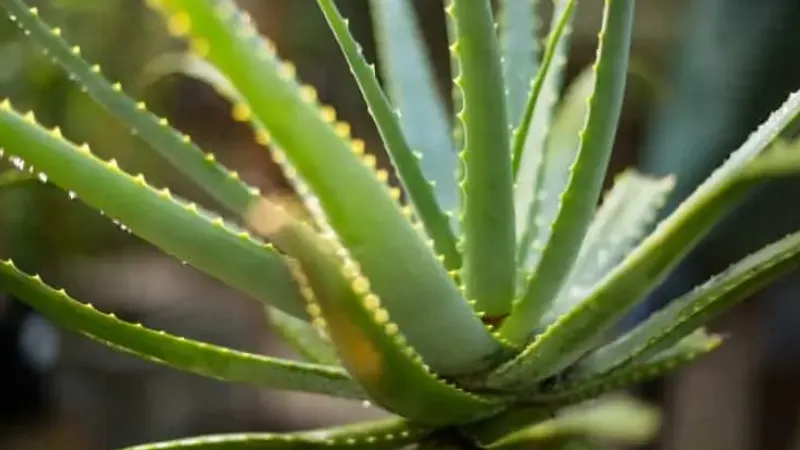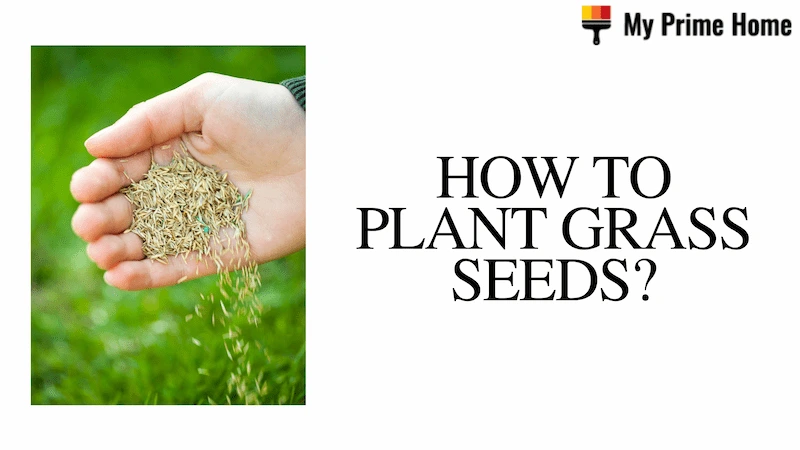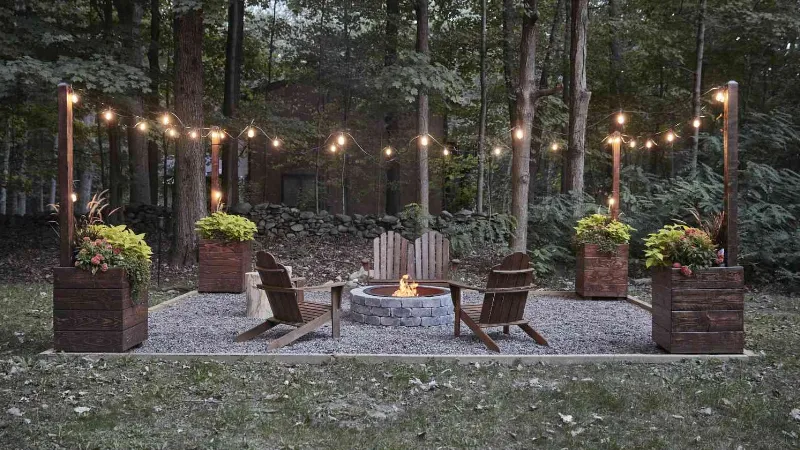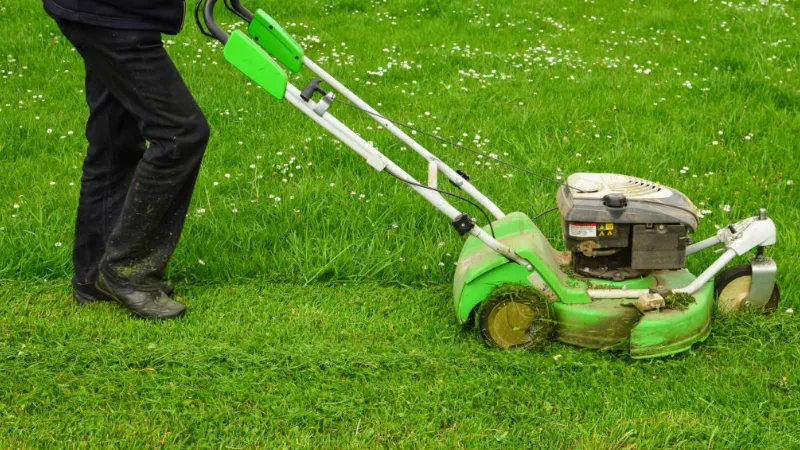Do you have any doubts about how big can aloe vera plants get in your indoor or outdoor garden? In this article, we examine their average plant size, as well as how big these popular succulents can actually get.
Typically, indoor aloe vera plants reach heights of 12 to 24 inches (30 to 61 cm). Plants have a 3-foot (91-cm) height limit under ideal circumstances. Their plant size actually depends on many different growth factors.
Please read on for more information.
What is Aloe Vera?
Aloe vera may look like a cactus, but according to taxonomy, it belongs to the Asphodelaceae family, not the cactus family.
While its botanical name is A. vera, various synonyms abound for this evergreen perennial: A. barbadensis, A. indica, A. elongata, and more. The first aid plant, burn aloe, and true aloe are other common names for this plant.
The name aloe is derived from the Arabic word alloeh which translates as “shining bitter substance” and the Latin word vera means “true.”
A remarkably short stem bears up to 39-inch-long, thick, long leaves. When young, the succulent leaves are green with specks, and they have serrated edges.
Greenish-yellow flowers grow out of a tall central spike that reaches up to 35 inches tall, and they will only bloom if you grow the aloe outdoors.
The leaves have three main components: the outer green “rind” or skin, a layer of latex, and the mesophyll layer, known as the “gel.” In order for the plant to photosynthesize during times of drought, this gel stores water.
Aloe vera gel, which contains 99 percent water and a range of lipids, vitamins, minerals, enzymes, amino acids, and anti-inflammatory hormones, is widely used in conventional and alternative medical procedures all over the world.
Used topically, the gel can be used to treat skin ailments like bug bites, first- or second-degree burns, acne, and even help to prevent bedsores.
If you grow it at home, you can snap a leaf off, cut it open, and scoop out the gel to use on your sunburn or bug bites.
A layer of yellowish latex containing aloin, a substance that may have adverse laxative effects if consumed, lies between the leaf skin and the gel. Aloe should also not be consumed by people with latex allergies.
Aloe gel is generally safe to ingest in small quantities, but “oral use of aloe latex poses safety concerns.”
For this reason, it’s best not to ingest any part of the plant as it can be mildly toxic to humans and it is highly toxic to cats, dogs, and horses.
Aloe vera juice is a popular health product, but bear in mind that it has been processed and purified to remove aloin, the compound contained in the latex that’s responsible for its laxative effects.
Known as Lu Hui in traditional Chinese medicine, extracts from the plant are prescribed as a “purgative” to treat constipation and kill parasites.
Aside from its industrial and medical applications, this plant is a low-maintenance houseplant that adds interest to a yard. You can grow it outdoors in USDA Hardiness Zones 9-11, and indoors as a houseplant no matter where you live.
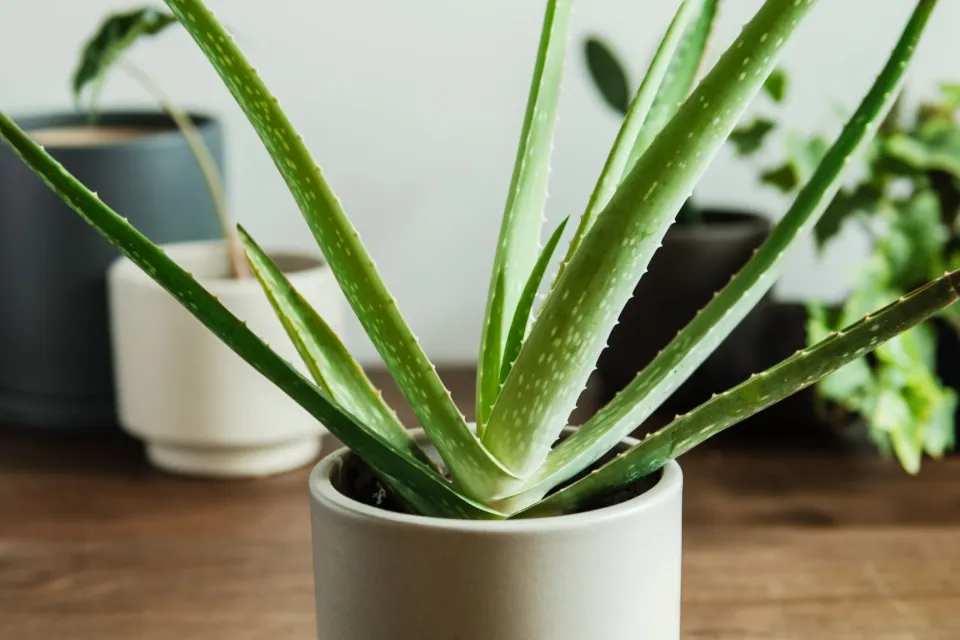
How Big Can Aloe Vera Plants Get? the Specific Answer
There is only one issue that might arise if you give your plant the best environment possible. It will grow larger. There comes a point where the growth your aloe has made might start to be an issue, especially since the majority of us do not live outdoors in the desert.
But have no fear! There are four relatively simple ways to maintain their size. None of them take a lot of time or effort, and a few only need to be done once a year. We’ll look at some simple methods in the sections below to prevent your plant from taking over your home.
Pruning
As a plant grows older, pruning might be required. Next to the plant’s main body, pups—small, independent plants—will frequently start to form. This is normal, but over time, the pups do grow, and will eventually make the overall size of the plant quite large, often overgrowing its container.
To keep your aloe at a manageable size, you will need tooccasionally prune back the plant. Before beginning your pruning efforts, it’s crucial to consider the plant as a whole. Be sure to remove some, but not all, of the pups if your aloe appears to have more on one particular side of the plant. A plant that has had too much growth removed may become unbalanced and topple over.
Consider potting up a pup or two as replacement plants for your original plant if, even after pruning, it is still too big for your living space. You can throw away your larger plant once the pups have rooted and produced new growth. Or, more likely, you’ll have three plants now rather than just one!
Light Intensity
Aloe vera needs to be grown under bright, indirect light. As opposed to shining directly on an object, indirect light must pass through the object. Usually, this level of light intensity can be found along the west and east-facing windows.
Bright light comes from a southern exposure. But make sure it is indirect, as excessively bright light has its own set of issues. Aloe will be stronger, more compact, and less likely to have insect and disease issues if it is grown under bright, indirect lighting.
Light levels that are too low can cause the plant to begin stretching out. The plant is attempting to reach the correct level of light by doing this. Though not in a good way, stretching makes the plant grow larger. Stretching has made the plant less structurally sound. This flaw frequently results in the plant falling over from weight alone.
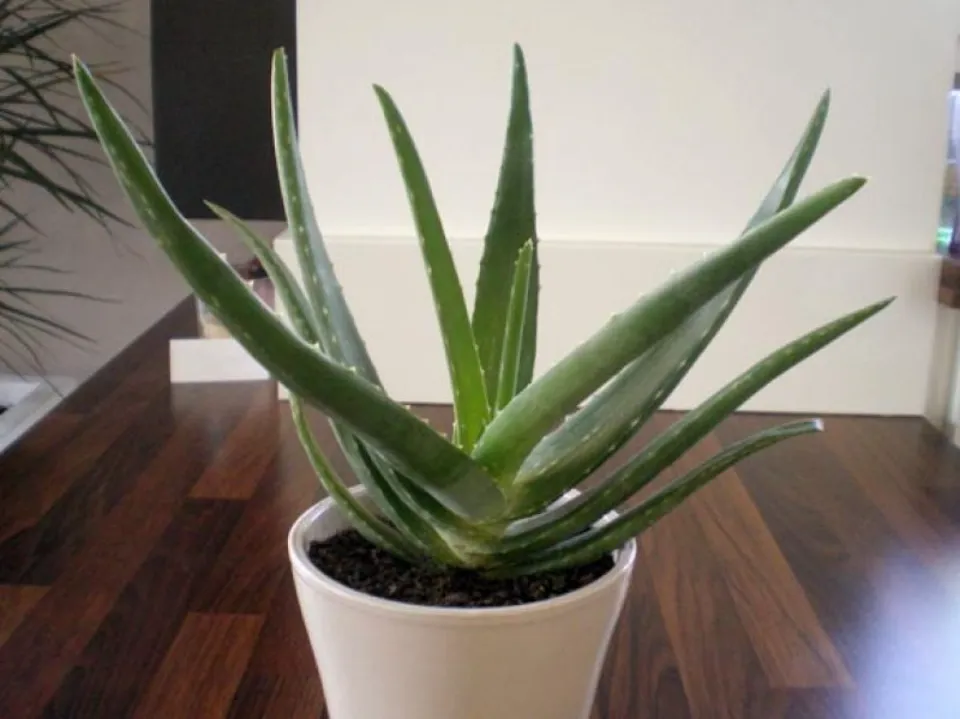
Fertilizer
All plants need nutrients to be healthy and grow properly. Different plants require different nutrients in varying amounts and types. In contrast to plants that need frequent feedings, this succulent actually prefers to use lower dosages of fertilizer.
Often, the potting mix’s organic material will supply the nutrients required for the aloe’s health. Over time, the organic components of the soil do breakdown and supplemental feeding with fertilizers may be required.
Look for a fertilizer that is specially formulated for cacti and succulents. To give your aloe more nutrition, apply at the recommended rate.
When the plant is actively growing, fertilize it. In the summer, aloe does go dormant if the ambient temperature and light level are too high. Aloe shouldn’t be fed while dormant.
First of all, because it isn’t actively growing, the salts in fertilizer run the risk of damaging the root system. The nutrients you are giving your aloe plant are not being absorbed, so secondly, it is a waste of money.
The aloe plant will respond by growing if you fertilize it extra frequently, as it should. But, too much fertilizer can cause your aloe to grow too much too fast. Your aloe will consequently spread out and grow bigger, but because of the rapid growth, the plant will eventually become weak structurally.
Weak plants often fall over. This occurs because the plant’s rapidly expanding size is simply too much for the cells to support. Additionally, plants under stress—such as those with rapid growth—are frequently attacked by pests and other plant pathogens.
Container Size
Using the appropriate container for the size of your plant is one of the simplest and most efficient ways to control plant growth.
Aloe does not need to be potted up often. Being a desert plant, being slightly root bound is not a problem for this popular succulent. In fact, being in a smaller pot helps prevent overwatering. To meet the nutritional and hydration requirements of your aloe, repotting it every few years is sufficient.
Generally speaking, a plant should have room to grow in its pot. When selecting a new container for your aloe plant, consider its size as well as the depth of its roots.
Given their growth rate being relatively slow, having about 1″ of space between the plant and the pot’s walls. As for depth, 1 ½-2″ longer than the root system is sufficient. This will allow the roots to grow into the surrounding soil without girdling or circling the pot.
You run the risk of overwatering your aloe plant if you put it in an excessively large pot. The larger pot will hold more soil volume. When watered thoroughly, the soil will remain too wet for a small plant. Your aloe plant will quickly succumb to root rot and an early death.
If using a larger, more decorative container, you may want to consider using the pot as a catch pot instead of directly planting your aloe inside. Simply place your potted aloe inside the more decorative pot. Your aloe plant will be content in its more suitable living container and you’ll achieve the appearance you want.
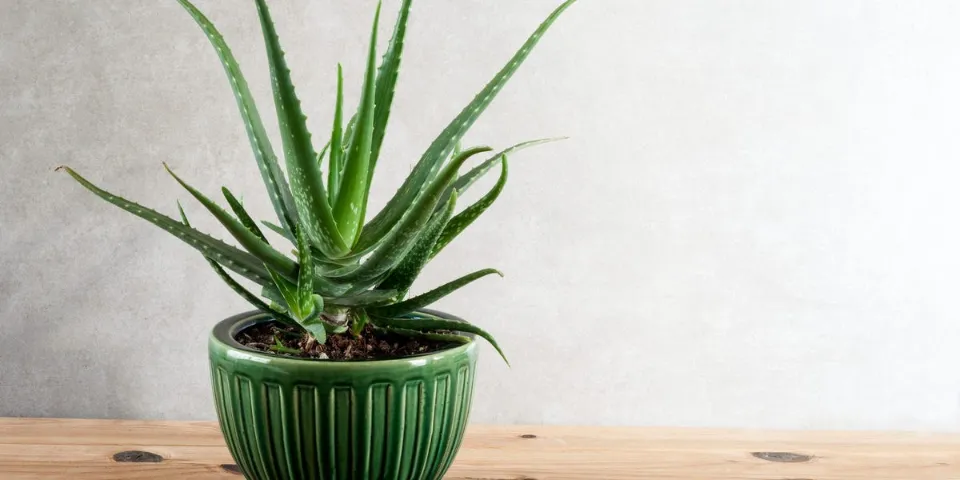
How to Keep Your Aloe Vera Small?
Your aloe will grow if it is in good health. So, what do you do if you have aloe vera planted in a small, cute container that you’re keeping on a small shelf or table? Or one that is developing in your terrarium?
What you can do is let the plant grow and replant its “pup” into small 4-inch pots. Pups are the diminutive plants that aloe vera will produce. You’ll have more pups if your aloe vera is larger.
When the plant begins to produce pups, you should wait until they are about 3-inches tall before dividing them off from the main plant.
You’ll need to take the mother plant out of the pot very carefully in order to get rid of the pups. Gently pull the pup away from the rest of the plant, making sure it has roots. The baby plants will have roots that are intertwined with the main plant.
If necessary, remove with clean, precise pruning scissors. Then pot these tiny plants again. But be ready to repot and make preparations for more puppies!
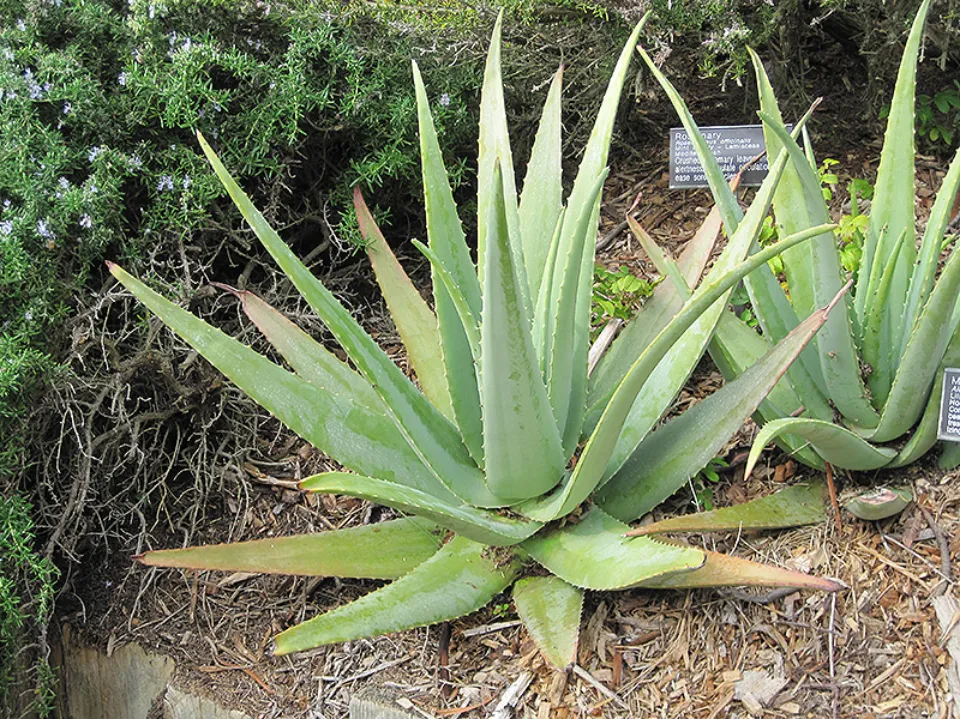
Ideal Growing Conditions to Promote Growth
The right lighting conditions and appropriate watering are just two of the crucial factors that will keep your aloe vera growing and flourishing.
Sunlight
Having several aloe vera plants has taught me one thing: they thrive in high light environments. Without enough light, the plant will eventually become tall and spindly rather than full and with healthy leaves.
A window facing south or west is the best choice for an aloe plant. As a result, your aloe will receive the majority of the day’s sunlight. How much sun do aloe vera plants need? The ideal amount of sunlight is between 6 and 7 hours.
Placing the plant in direct sunlight can burn the leaves and cause it to dry out too quickly, especially in the summer. Instead, place it in indirect sunlight.
Aloe prefer temperatures that are between 55 and 80°F (13 and 27°C) – so pay attention to room temperature and move the plant to a warmer or cooler room if needed.
If you’re set on growing aloe vera in your house but simply lack the necessary sunlight, these succulents thrive in artificial lighting.
Watering Your Aloe
Overwatering an aloe plant is the most common error people make. Consistent watering is essential to the growth of this plant. Overwatering will lead to root rot, which will eventually kill the roots of the plant and then the plant itself.
Water the plant thoroughly and wait at least one to two inches between waterings to allow the soil to completely dry out.
Never allow a plant to stand in water. My plant pots are positioned on top of a layer of tiny gravel rocks so that water can collect there and keep the roots from becoming soggy.
As a rule, during the spring, summer, and fall you can plan on watering your aloe vera every two to three weeks. Water your plants every three to four weeks during the winter months.
The plant will be in a dormant stage during the colder months, when little growth occurs, so it will need less water.
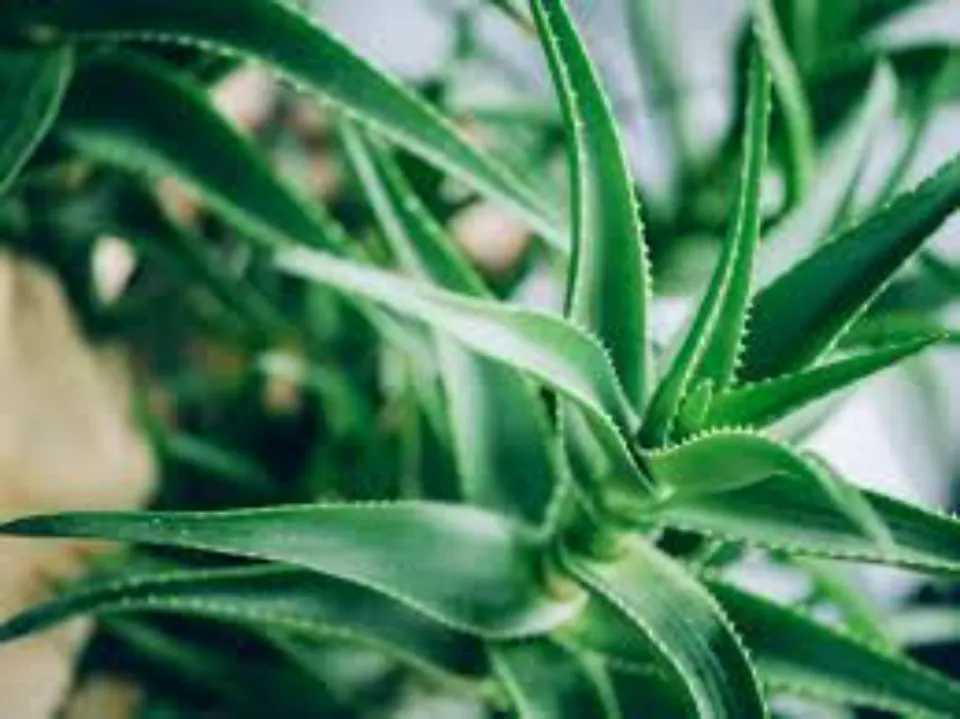
The Right Pot and Soil
Choose a pot with one or more holes on the bottom; you want the pot to have good drainage. My preferred containers are made of clay or terracotta because they help keep the soil moist for longer periods of time.
Utilize a soil mix that drains well. Look for a commercial mix made specifically for succulents at your neighborhood garden center. Alternatively, you can create your own by combining sand or perlite with regular potting soil.
Plant the aloe about a third way into the pot, being sure to leave about a half-inch of space between the top layer of soil and the edge of the pot.
You’ll want to repot the aloe when it starts to become root bound, moving the plant to a container that’s one size up.
Fertilizer
Unlike many other houseplants, aloe vera should only be fertilized every six to eight weeks. Aloe won’t require a lot of additional nutrients if you are providing it with enough sunlight, water, and the proper type of soil.
In fact, fertilizing too often can lead to “leaf burn,” where the tips of the leaves start to turn brown. If you’re going to fertilize, pick a liquid fertilizer with a lot of phosphorus, like 10-40-10.
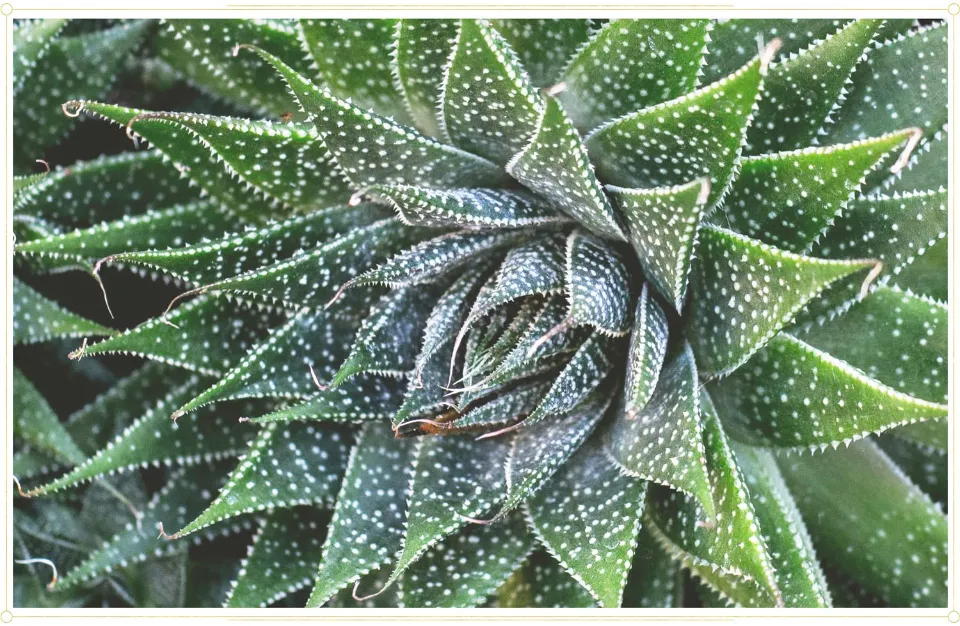
FAQs
Aloe vera plant care isn’t always easy for everyone, especially if you’re a first-time plant owner. Here are some quick responses to the most typical queries about aloe vera plants.
Do Aloe Plants Need Direct Sunlight?
A little caution is advised because moving an aloe plant from a shaded area to direct sunlight too quickly can result in sunburn. Aloe plants require about six hours of direct sunlight.
Do Aloe Vera Plants Clean the Air?
Formaldehyde and benzene, substances present in chemical-based cleaners, are removed from the air by aloe vera plants. This makes them a great indoor plant for kitchens and bedrooms. Additionally, breathing is made simpler and you sleep better when there is more pure air around.
Should I Fertilize My Aloe Plant?
Fertilizing your aloe plant is not always necessary. Since aloe vera plants are succulents, they can recover nutrients in abrasive soil. Some people advise fertilizing aloe plants once or twice a year.
Why Are the Tips of My Aloe Plant Turning Yellow?
Inadequate watering or excessive direct light may be to blame for aloe plant tips turning yellow. Best practices for aloe plant care can be found in the section above.
What is Aloe Vera Good For?
Aloe vera is good for fighting cavities and healing burns. The FDA approved of aloe vera as an over-the-counter medication for skin burns in 1959. Furthermore, according to a ScienceDaily report, aloe vera is effective in preventing cavities.
Summary: How Big Can Aloe Vera Plants Get?
Aloe vera plants grown indoors can usually grow to 12 to 24 inches (30 to 61 cm). Plants can expand up to 3 feet (91 cm) in height under the right circumstances.
Again, if you take care of your aloe vera plant as a gardener, it will inevitably grow. To prevent your aloe from resembling the infamous Seymour from Little Shop of Horrors, there are simple steps you can take. You can maintain your aloe at the size that works best for you by pruning, choosing the right container size, providing adequate light levels, and avoiding overfeeding.
If you have any questions, please leave a comment. My Prime Home tries to give you the best home improvement information. Don’t forget to share the post. Thank you for reading.
You may also interested:
